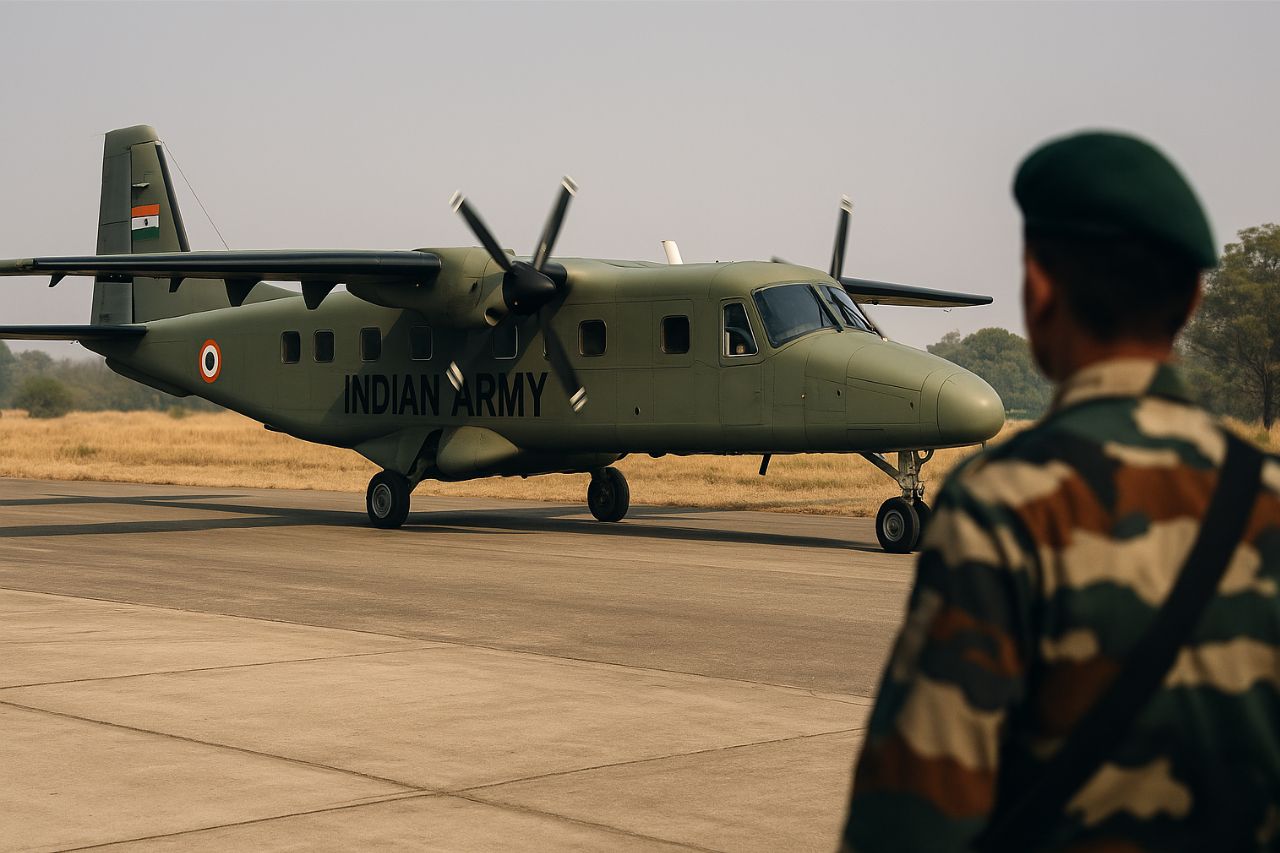The debate over fixed-wing aviation assets for the Indian Army has resurfaced as battlefield demands evolve.
For decades, the Army has relied on the Indian Air Force (IAF) for close air support (CAS), intelligence, surveillance, target acquisition, and reconnaissance (ISTAR). While that arrangement has worked
Yet, the IAF’s traditional focus has been on strategic missions. The emphasis on deep strike, counter-air campaigns, and air dominance often leave gaps in immediate battlefield support.
With modern conflicts demanding rapid, integrated responses, the case for dedicated fixed-wing assets under Army Aviation is stronger than ever.
The IAF’s Strategic Lens vs. the Army’s Tactical Needs
The IAF naturally prioritises strategic air campaigns. Its assets, from Su-30 MKIs to Rafales, are designed for high-intensity engagements and strategic deterrence.
While this doctrine secures India’s skies, at the tactical level, it leaves room for operational friction. Army commanders often face delays in securing air support because CAS and intelligence, surveillance, and reconnaissance (ISR) sorties must be slotted into broader IAF priorities.
At forward posts along the Line of Actual Control (LAC) or in counter-insurgency zones, this delay is costly. Here, commanders require real-time ISR feeds and immediate firepower and waiting for “availability” undermines operational tempo.
In future conflicts, especially in Ladakh or Arunachal Pradesh, where response windows are measured in minutes, the Army cannot afford to rely solely on goodwill and prioritisation cycles.
Why the Army Needs Fixed-Wing Assets
Aviation is no longer a support arm; it is intrinsic to modern land warfare. Just as the Army’s attack helicopters— Apaches and Prachand– finally gave ground forces organic firepower, fixed-wing aircraft will provide three critical advantages:
- Army-owned ISTAR and CAS platforms would operate under Army commanders, not subject to inter-service prioritisation battles.
- Turboprops and light transports can operate close to the frontlines from short, austere strips, reducing dependence on large IAF bases.
- With fixed-wing aviation plugged into the Army’s tactical networks, ISR and firepower become seamless extensions of ground manoeuvre.
Options for Army Fixed-Wing Elements
If structured wisely, Army Aviation need not replicate the IAF. Instead, it can focus on niche assets tailored to battlefield support:
Aircraft like the King Air 350ER, Dornier Do-228 (already in HAL production), or modern equivalents fitted with electro-optical, radar, and signals intelligence payloads provide persistent battlefield surveillance without tying up the IAF’s heavier AWACS or fighters.
Light transport aircraft capable of operating from improvised strips in forward areas would support troop rotations, casualty evacuation, and logistics in high-altitude sectors where helicopters are limited by payload constraints.
Platforms similar to the Embraer Super Tucano, Archangel, or Beechcraft AT-6, all rugged aircraft, deliver precision strikes, are cost-effective to operate, and can loiter over battle zones for extended periods. For counter-insurgency and border skirmishes, armed turboprops offer a potent, scalable option.
Collectively, these platforms would fill the “last mile” gap between Army ground manoeuvre and the IAF’s higher-order missions.
Integration Without Duplication
Critics argue that the Army’s fixed-wing assets risk duplication of IAF roles. The answer lies in integration with deconfliction. Just as Army Aviation helicopters already operate under an Army-led chain of command while coordinating with IAF’s Air Traffic Orders (ATO), fixed-wing elements can follow the same model.
Airspace management and fratricide prevention remain the IAF’s prerogative, but operational control must rest with Army commanders. This balance ensures that tactical needs are met without undermining the IAF’s strategic missions.
Lessons from Global Armies
Globally, the model is well established. The US Army operates hundreds of fixed-wing aircraft, including Beechcraft ISR platforms and short-field transports, independent of the US Air Force.
Similarly, many North Atlantic Treaty Organisation (NATO) armies deploy their own ISTAR and light CAS fleets, recognising that tactical responsiveness cannot be outsourced. India’s own terrain and threats from high-altitude border flashpoints to counter-terror operations mirror these requirements.
Army Wings for Army Fights
The modern battlefield demands speed, integration, and flexibility. While the IAF ensures air superiority and strategic deterrence, the Army must secure its own wings for its own fights. Light ISTAR aircraft, armed turboprops, and short-field transports are not luxuries but necessities to close the operational gap.
Delays in recognising this need will only perpetuate dependence and compromise battlefield tempo. As India prepares for a contested security environment across two fronts, empowering Army Aviation with fixed-wing assets is not duplication. It is doctrinal inevitability.
The bottom line is clear: Army wings must serve Army fights.
